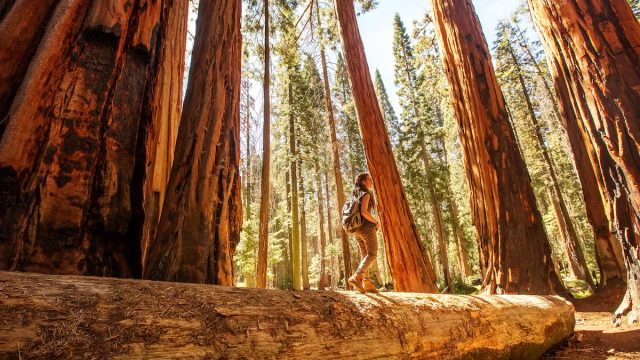“Flood Threat” to Three National Parks Is Causing “Severe” Damage

If you were planning to spend Memorial Day Weekend vacationing in one of California’s national parks, think again. The Golden State’s unprecedented winter—the Sierra Nevada mountains got over 700 inches of snow, per Forbes—has had some lingering effects on the parks, including Yosemite National Park, whose swimming, rafting, and picnicking areas will be closed through July due to flooding. Joining the ranks is Sequoia and Kings Canyon National Parks, whose most-traveled hiking paths will be off limits to visitors through possibly the end of the summer season, park officials warn.
READ THIS NEXT: The 7 Newest National Parks You Need to Add to Your Bucket List.
In a May 11 press release, the park service revealed that access to Giant Forest, where travelers can gaze upon the world famous 2,000-year-old General Sherman tree, is expected to reopen from Highway 180 through the Kings Canyon entrance station by June 9. The road could open on June 2 at the earliest. Meanwhile, access from Highway 198 through the Sequoia entrance is expected to be closed through July 1. These roads will continue to be monitored, but keep in mind that melting snow could delay repairs and consequently, push back reopening dates.
“Sequoia and Kings Canyon National Parks personnel continue to make progress with snow clearing, damage repairs, and all the various tasks associated with recovering from a historic winter season,” park officials said in a statement. “Memorial Day weekend is the usual kick-off to summer in the parks, but unfortunately this year, access to the world’s largest tree (by volume) and the surrounding Giant Forest and Lodgepole area won’t be open in time.”
Unfortunately, adventure seekers won’t have the opportunity to explore Crystal Cave this year either. According to park officials, Crystal Cave Road suffered “significant road damage” and will not reopen to the public until 2024.
They also announced that vehicle access to Mineral King, which is home to several glaciers and the East Fork of the Kaweah River, won’t be permitted until August. Albeit, they are expecting to push that date back even further as snowpacks continue to melt.
Cedar Grove has also been severely impacted by the harsh winter elements. The national park service said, “Due to severe road damage along the Highway 180 corridor, outside the park, between Grant Grove and Cedar Grove, Caltrans does not expect repairs to be completed before the end of the summer season. This means public access is not expected into the Cedar Grove area of Kings Canyon National Park for the 2023 summer season.”
For more up-to-date travel information, sign up for our daily newsletter.
Campgrounds across all California national parks, including Yosemite, Sequoia, and Kings Canyon, aren’t in the best of shape either. Local news station KCRA 3 warns that as it gets warmer outside, the likelihood of a “flood threat” increases.
National parks are massive entities with multiple hiking trails, swimming pools, and lodging/picnicking areas, so the guidelines for one area may not be the same for another. Before and during your trip, the national park service highly encourages travelers to check nps.gov/SEKI for up-to-date information and trip-planning tips, so you can plan both a safe and fun exploration.